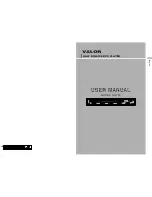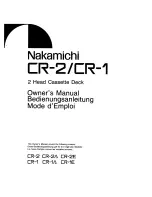
112
Some groups sponsored by other national governments have
advised that children be discouraged from using cell phones at
all. For example, The Stewart Report from the United Kingdom
made such a recommendation in December 2000. In this report,
a group of independent experts noted that no evidence exists that
using a cell phone causes brain tumors or other ill effects. Their
recommendation to limit cell phone use by children was strictly
precautionary; it was not based on scientific evidence that any
health hazard exists.
Additional information on the safety of RF exposures from various
sources can be obtained from the following organizations
(updated 10/1/2010):
•
FCC RF Safety Program:
http://www.fcc.gov/oet/rfsafety/
.
•
Environmental Protection Agency (EPA):
http://www.epa.gov/radtown/wireless-tech.html
.
•
Occupational Safety and Health Administration (OSHA):
http://www.osha.gov/SLTC/radiofrequencyradiation/
.
(Note: This web address is case sensitive.)
•
National Institute for Occupational Safety and Health (NIOSH):
http://www.cdc.gov/niosh/
.
•
World Health Organization (WHO):
http://www.who.int/peh-emf/en/
.
•
International Commission on Non-Ionizing Radiation Protection:
http://www.icnirp.de
.
•
Health Protection Agency:
http://www.hpa.org.uk/Topics/Radiation/
.
•
US Food and Drug Administration:
http://www.fda.gov/Radiation-
EmittingProducts/RadiationEmittingProductsandProcedures/
HomeBusinessandEntertainment/CellPhones/default.htm
.
Specific Absorption Rate (SAR) Certification
Information
Your mobile device is a radio transmitter and receiver. It is
designed and manufactured not to exceed the exposure limits for
Radio Frequency (RF) energy set by the Federal Communications
Commission (FCC) of the U.S. Government.
These FCC exposure limits are derived from the
recommendations of two expert organizations: the National
Council on Radiation Protection and Measurement (NCRP) and
the Institute of Electrical and Electronics Engineers (IEEE).
In both cases, the recommendations were developed by scientific
and engineering experts drawn from industry, government, and
academia after extensive reviews of the scientific literature
related to the biological effects of RF energy.
The exposure limit set by the FCC for wireless mobile devices
employs a unit of measurement known as the Specific
Absorption Rate (SAR). The SAR is a measure of the rate of
absorption of RF energy by the human body expressed in units of
watts per kilogram (W/kg). The FCC requires wireless devices to
comply with a safety limit of 1.6 watts per kilogram (1.6 W/kg).
DRAFT
















































